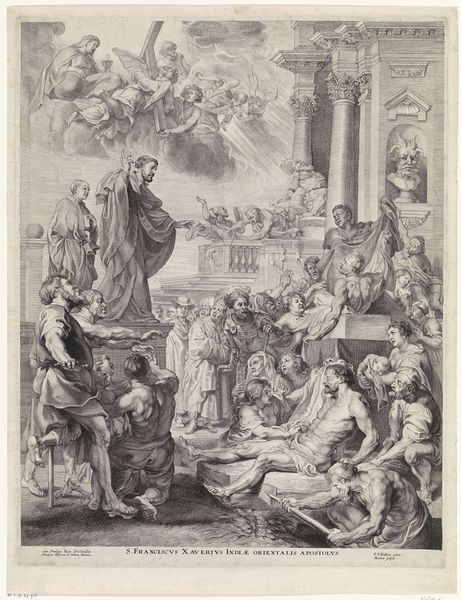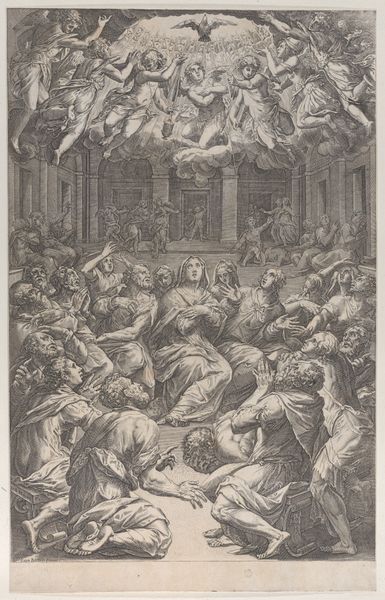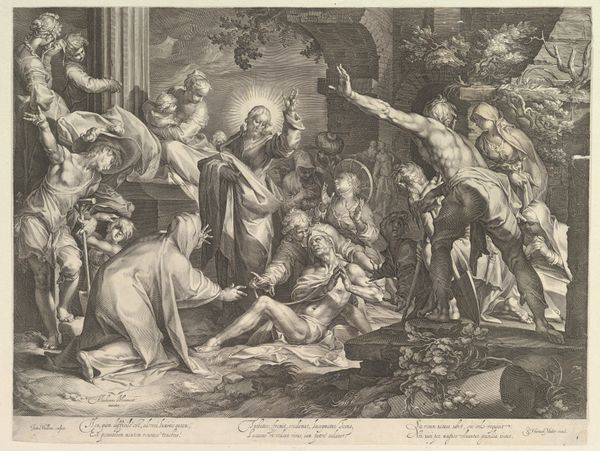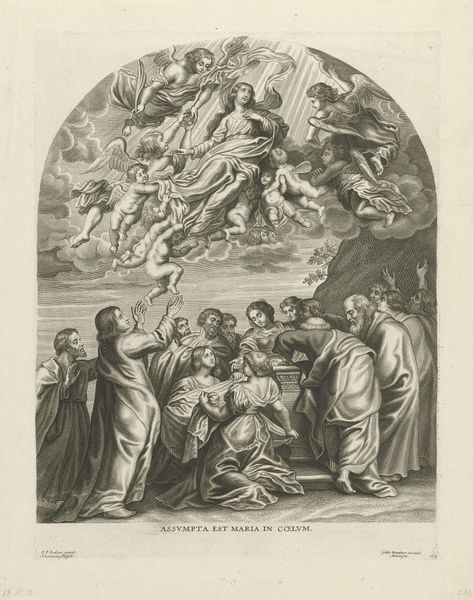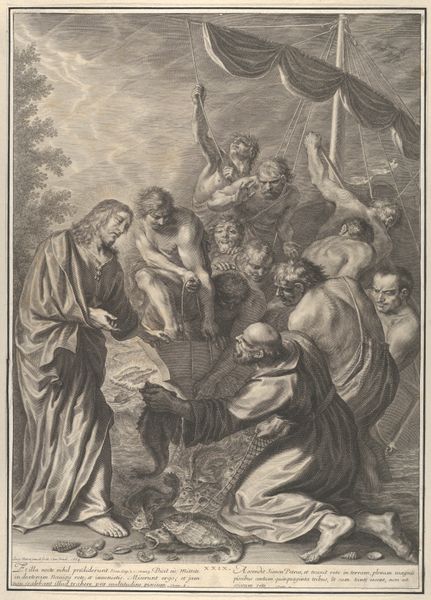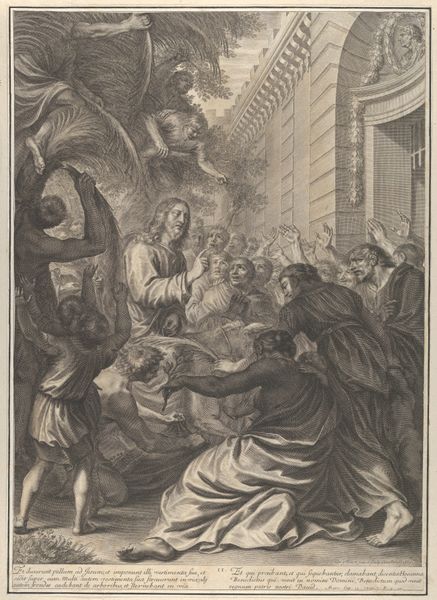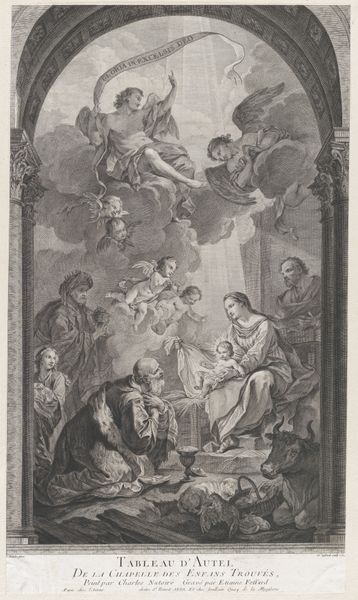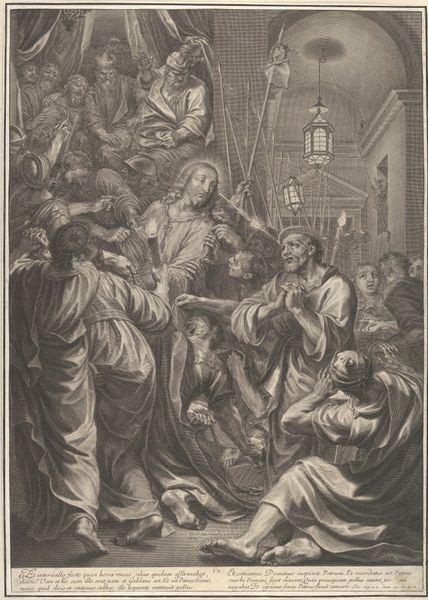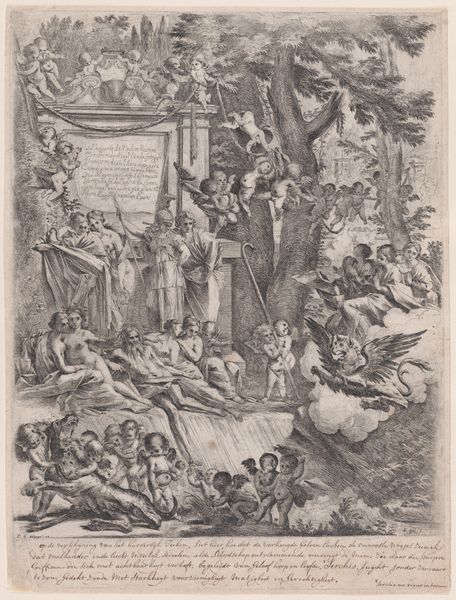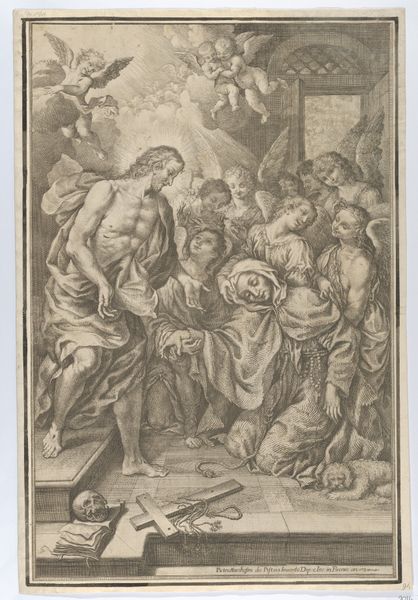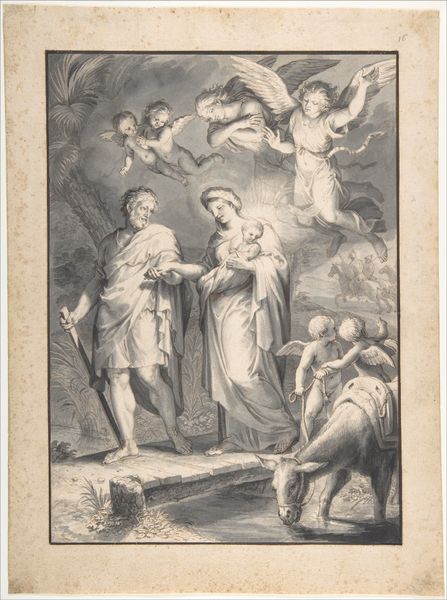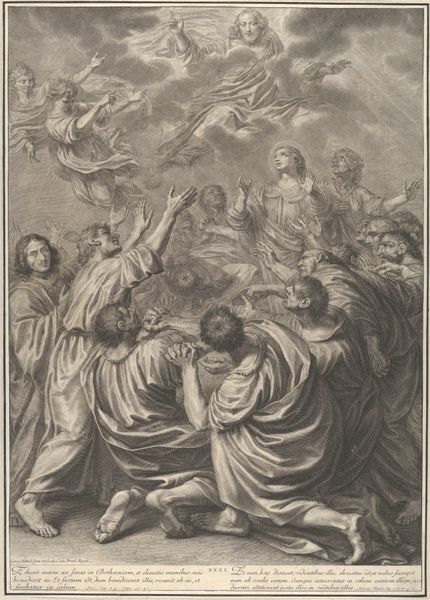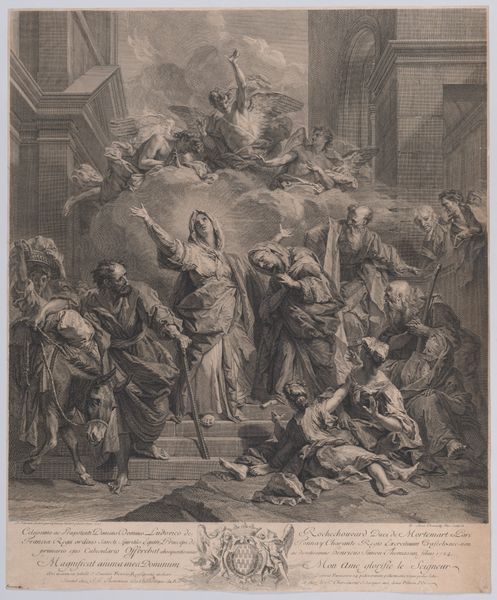
engraving
#
baroque
#
charcoal drawing
#
pen-ink sketch
#
history-painting
#
engraving
Dimensions: height 611 mm, width 452 mm
Copyright: Rijks Museum: Open Domain
Curator: This engraving, tentatively dated between 1661 and 1684, depicts Saint Francis Xavier raising a man from the dead. It is an unsigned piece currently held in the Rijksmuseum collection. What's your first take? Editor: Overwhelming! There’s a frenetic energy emanating from the dense composition—almost a vortex drawing your eye into the center where this supposed miracle is occurring. The sheer volume of figures packed into the scene feels chaotic, charged with disbelief and awe. Curator: Absolutely. Considering this piece through the lens of religious and colonial history, the revival becomes less about divine intervention and more about the performative aspect of power. Saint Francis Xavier's missionary work was deeply intertwined with Portuguese colonialism, so such a grand image would reinforce notions of European cultural and spiritual superiority, creating an "us versus them" dynamic. Editor: I notice, too, that Saint Francis Xavier is rendered in full light while many in the crowd exist mostly in shadow. His hands are open in gesture and offering. He is the clear source of the divine symbol: an almost radiating force. Does it depict the actual miracle or is it communicating its idea? Curator: Both, perhaps? But given the period, its likely communicating power, not necessarily representing an actual, physical, scientifically provable event. The symbolism becomes instrumental in creating a narrative justifying colonialism and the forced conversion. We also see it played out in the art produced during colonization in Africa or in South America. It shows the intersection of religion, politics and control. Editor: Indeed. Thinking of that colonial context adds another layer to this image. I keep coming back to those figures – both angelic and human – clustered together so intensely. Are these representative of common depictions or unique to this interpretation? Curator: Depictions of angelic throngs, such as the figures billowing around the central cloud are relatively common. It gives the images that additional sense of heavenly sanction. As for the ‘human’ figures – many historical pieces depict indigenous peoples as barbaric or less civilized, therefore making colonial activities appear as inherently more just and necessary for ‘saving’ them. These tropes underscore the complex issues inherent in art serving religious and political agendas. Editor: It’s unsettling how visual languages can perpetuate such harmful rhetoric. The sheer artistic skill contrasts with the exploitative message being propagated. Curator: Precisely. The craftsmanship is undeniable, but understanding its socio-political roots allows us to view the image critically, confronting its historical implications rather than passively accepting its narrative. Editor: Thank you; considering that the artwork reinforces colonial structures has completely changed my initial reading of this engraving.
Comments
No comments
Be the first to comment and join the conversation on the ultimate creative platform.
